#Louis Figuier
Explore tagged Tumblr posts
Text

"Vue idéale de la terre pendant la période miocene" [Ideal view of the earth during the Miocene period] by Edouard Riou, from La terre avant le déluge [The world before the deluge] by Louis Figuier, 1863
#edouard Riou#la terre avant le deluge#world before the deluge#louis figuier#1863#deinotherium#rhinoceros#Mastodon#Dryopithecus#Miocene
44 notes
·
View notes
Photo
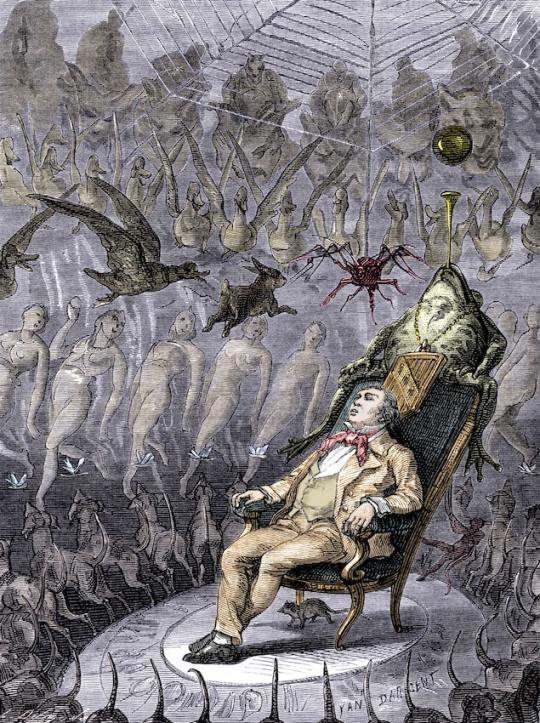
(vía The Ether Dreams of Fin-de-Siècle Paris – The Public Domain Review)
Yan' Dargent illustration for Louis Figuier's Les Merveilles de la Science depicting the hallucinatory dreams produced by ether, 1868 — Source
98 notes
·
View notes
Text
What perfume/cologne would the Van Der Linde gang wear
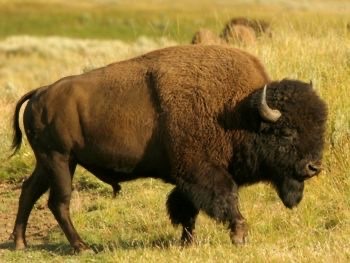

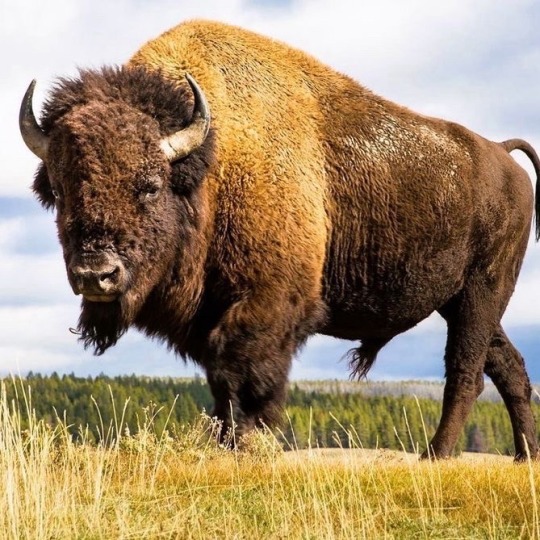
hi!! this is my first tumblr post, and i don’t exactly know how to do this or work the app, so forgive me if this is horribly worded or confusing.
anyways, this is my opinion on what colognes or perfumes the gang would wear. horses and cain included, since they are technically a member of the gang!!
Abigail -
something woodsy, maybe like the forest or a campfire, cedar wood, trees, plants.
examples:
- G-Water
- Tam Dao
- Snoqualine
Arthur -
tobacco, scent of alcohol, mud, outdoors.
examples:
- Jasmin et Cigarette
- Rien
- Earthworm
Baylock -
ashes, grease.
examples:
- Tobacco Blaze
- Garage
- La Yuquam Homme
Bill -
any popular male fragrances, or like gunpowder and fire.
examples:
- 9mm Ballistic Therapy
- High Noon
- Campfire Nights
Boaz -
dynamite, money.
examples:
- Wall Street
- Don Xerjoff
- 1805 Tonnerre BeauFort London
Branwen -
oatcakes, apples, water.
examples:
- Lostmarch Lann-Ael
- Be Delicious
- Cavalli Acqua
Bob -
blood, gunpowder, sweat.
examples:
- Vena Cava
- Richard Dark Side
- Secretions Magnefique
Brown Jack
pomade, alcohol, blood.
examples:
- Classic Fragrance
- Heeley Agarwood
- Molotov Cocktail
Cain -
dog, mud, grass.
examples:
- La Panthere Edition Soir
- Grass
- Zoologist Bat
Charles -
light florals, nature, clean fur.
examples:
- Coach Floral
- Super Cedar
- Coyote
Dutch -
blood, metal, tears.
examples:
- Vassago
- Spacewalk
- Rainy Season of Dresden
Davey -
snow, wood, fire.
examples:
- Waltz of the Snowflakes
- Tobacco Vanille
- Inquisitor
Enis -
whiskey, beer, grass.
examples:
- Tom Oud
- Stout ‘n Smoke
- Dune Road
Grimshaw -
sulfur, metal, cinnamon.
examples:
- Bloody Smoke
- Vanille Absolu
- Jupiter
Gwydion -
birds, leather, salt.
examples:
- Seemannn
- Black Saffron
- Millésime Impérial
Hosea -
moonshine, stew, metal.
examples:
- Moscow Mule
- Starfish & Coffee
- Santal 33
Jack -
water, horse, corn oil.
examples:
- Petrichor
- Cuir de Russie
- Seems Legit
Javier -
mahogany, cotton, musk.
examples:
- Redwood Leaves
- Lazy Sunday Morning
- Urban Musk
Jenny -
snow, wool, wood.
examples:
- Redwood Mist
- Battaniye
- Grey Vetiver
John -
sweat, musk, grease
examples:
- Flores Negras
- Silver Musk
- Cristina La Veneno Ni Puta Ni Santa
Kieran -
blood, grass, oats.
examples:
- Hora de la Verdad Sombra
- Figuier Eden
- Harran
Karen -
beer, guns, whiskey.
examples:
- Beguile
- Wicked John
- Kutay
Lenny -
blood, books, bullets.
examples:
- Seems Legit
- Diamonitirion - elixir atonit
- Moon Child
Mac -
metal, bullets, kerosene.
examples:
- Craft
- Iron Duke
- Nuvolari Rubini
Maggie -
dirt, stone, bog.
examples:
- Le Sillage Blanc
- During the Rain
- Swamp elixir
Mary-Beth -
books, ink, gold.
examples:
- Bibliophilia: Love of Books
- Supreme Vanilla
- Royal Blood
Micah -
rot, corn, mold.
examples:
- Saint Louis Cemetery #1
- Funerie
- French Kiss
Molly -
roses, grass, trees.
examples:
- Roses Musk
- Leila Lou
- Colors de Benetton
Nell II -
sweat, cows, pig.
examples:
- Amyi 3.17
- Cuir de Russie
- Hyrax
Old Belle -
carrots, beer, hay.
examples:
- Carotte
- Sónar
- Basilico & Fellini
Old Boy -
musk, tears, cow.
examples:
- Another 13
- Ozone
- Osmanthus
Pearson -
meat, vegetables, crawfish.
examples:
- Gino: Steak Scented Eau de Parfum
- Eau de Cuisine
- Wild Carrot Oud
Reverend -
whiskey, incense, coffee.
examples:
- 7 Loewe
- Bourbon e Fava Tonka
- Black Opium
Sadie -
blood, tears, gunpowder.
examples:
- Bull’s Blood 2nd Edition
- Cool Glacier
- Rendez-Vous!
Sean -
whiskey, sweat, bullets.
examples:
- Malt Akro
- Monochrome
- Amour Nocturne
Silver Dollar -
fire, wool, metal.
examples:
- Encens Pyro
- The Sheepfold, Moonlight
- Rosenrot
Taima -
deer, blood, meat.
examples:
- Ma Bete
- Trinity Blood
- Good Girl Gone Bad
The Count -
sugarcubes, peaches, pears.
examples:
- Pixie Dust
- Allure Eau de Parfum
- First Base
Trelawny -
doves, rabbits, silk.
examples:
- Ruğa Sablo
- Wet Garden
- Baklava Musk
Tilly -
bullets, baby powder, swamps.
examples:
- 266ts Pontiff’s Harley
- Cashmere Mist Eau de Toilette
- Haxan
Uncle -
manure, horse, cow.
examples:
- D’zing
- L’heure Fougueuse
- Zoologist Cow
again, this is my first post so i’m very sorry about it being bad or isn’t looking right for tumblr. so sorry.
#rdr2#van der linde gang#arthur morgan#john marston#dutch van der linde#hosea matthews#micah bell#red dead redemption 2
25 notes
·
View notes
Text
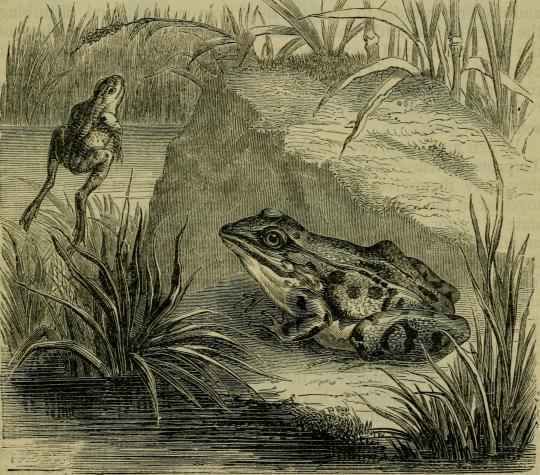
Frogs (illustration from Reptiles and birds: a popular account of their various orders, with the habits and economy of the most interesting by Louis Figuier and Parker Gillmore, 1883)
Happy World Frog Day!
#frog#frogs#World Frog Day#amphibians#art#art history#illustration#animals in art#grayscale#19th century art
323 notes
·
View notes
Text

Position of skeletons in a Swedish tomb of the Stone Age in Louis Figuier, Primitive man (G. P. Putnam's Sons 1876)
from here
19 notes
·
View notes
Text
HISTORICAL PRECURSORS TO THE RADA AND PETWO RITES
In the historical record, there appear to be two prominent sects of colonial Voodoo: (1) snake worshippers (2) followers of Don Pedro. The snake worship sect appears to be the precursor to the Rada rite, while the Don Pedro sect appears to be the precursor to the Petwo rite.
Key historical documents pertaining to the snake worshippers include:
Moreau de Saint-Méry, Médéric Louis Elie. Description topographique, physique, civile, politique et historique de la partie française de l'isle Saint Domingue (etc.). Vol. 1. Moreau de Saint-Méry, 1797. p. 45-51 https://archive.org/details/descriptiontopog00more/page/44/mode/2up
Malenfant, Colonel (1814) Des Colonies et Particulierement de Celle de Saint-Domingue: Memoire Historique et Politique. Paris: Audibert., p. 217-220 https://archive.org/details/descoloniesetpar00male/page/215/mode/1up?q=vaudou
Key historical documents pertaining to the Don Pedro sect include:
Archives Nationales d’Outre-Mer, Aix-en-Provence, E 182, Ferrand de Beaudière to the Naval and Colonial Minister, translated in “Prophet or Cook? The Real Don Pedro” in Geggus, David. The Haitian Revolution: a documentary history. Hackett Publishing, 2014.
Moreau de Saint-Méry, Médéric Louis Elie. Description topographique, physique, civile, politique et historique de la partie française de l'isle Saint Domingue (etc.). Vol. 1. Moreau de Saint-Méry, 1797. p. 51 https://archive.org/details/descriptiontopog00more/page/44/mode/2up
Descourtilz, Michel Etienne, and LECLERC, Charles Emmanuel. Voyages d'un naturaliste France, Dufart, pere, 1809. https://archive.org/details/voyagesdunnatura03desc/page/180/mode/2up https://www.google.com/books/edition/Voyages_d_un_naturaliste/wOzA6FsbqJAC?hl=en&gbpv=0
Drouin de Bercy, Léon. De Saint-Domingue: de ses guerres, de ses révolutions, de ses resources, et de moyens a prendre pour y rétabilir la paix et l'industrie. France, Chez Hocquet, 1814. p. 176 https://books.google.com/books?hl=en&lr=&id=FxYWAAAAYAAJ&oi=fnd&pg=176#v=onepage&q&f=false
These documents are described in:
Chapter 2 “The Evolution of Colonial Voodoo” in Laguerre, Michel S. Voodoo and politics in Haiti. Springer, 2016. pp. 22-38
Hebblethwaite, Benjamin. A Transatlantic History of Haitian Vodou: Rasin Figuier, Rasin Bwa Kayiman, and the Rada and Gede Rites. United States, University Press of Mississippi, 2021.
Excerpts from these documents are included below, with commentary:
[RADA1] MOREAU DE SAINT-MERY’S (1797) DESCRIPTION TOPOGRAPHIQUE, PP.45-51
In Description topographique, (1797) Moreau de Saint-Méry described two variants of Vodou (“Vaudoux”), which seem to be the precursors of the Rada and Petwo rites respectively.
The first variant of Vodou is described between pages 45 and 51, introduced like so:
“Selon les nègres Aradas, qui sont les véritables sectateurs du Vaudoux dans la Colonie, & qui en mantiennent les principes & les règles, Vaudoux signifie un être tout-puissant & surnaturel, dont dépendent tous les événemens qui se passent sur ce globe. Or, cet être, c'est le serpent non venimeux ou une espèce de couleuvre, et c'est sous ses auspices que se rassemblent tous ceux qui professent la même doctrine. Connaissance du passé, science du présent, prescience de l'avenir, tout appartient à cette couleuvre, qui ne consent néanmoins à communiquer son pouvoir, & à prescrire ses volontés, que par l'organe d'un grand-prêtre que les sectateurs choisissent, & plus encore par celui de la négresse que l'amour de ce dernier a élevée aurang de grande-prêtresse.”
TRANSLATION:
“According to the Aradas, who are the true devotees of Voodoo in the colony, and who maintain the principles and the rules, Voodoo signifies an all-powerful & supernatural being, on whom depends all events that happen in the world. Now, this being is the non-venomous serpent or a kind of grass snake, and it is under its auspices that all those who profess the same doctrine gather. Knowledge of the past, science of the present, prescience of the future, all belong to this grass snake, which nevertheless does not consent to communicate its power, and to prescribe its wishes, except through the organ of a high priest whom the sectarians choose, and even more through that of the negress whom the love of the latter has raised to the rank of high priestess.”
SOURCE: Moreau de Saint-Méry, Médéric Louis Elie. Description topographique, physique, civile, politique et historique de la partie française de l'isle Saint Domingue (etc.). Vol. 1. Moreau de Saint-Méry, 1797. p. 45-51 https://archive.org/details/descriptiontopog00more/page/44/mode/2up
The ceremony resembles snake worship of Ouidah, where it centers around a snake god (couleuvre). It was presided over by two ministers, who were called “King” (Roi) & “Queen” (Reine), “master” (maître) & “Mistress” (maîtresse), or “Papa” (papa) & “Mama” (maman). With the snake secured inside a box, the ceremony begins with an adoration of the snake and an oath of secrecy. The congregation was then allowed to make appeals to the snake. Many of those present were slaves: “La plûpart lui demandent le talent de diriger l'esprit de leurs maîtres;” (p. 47)
This is followed by spirit possession by the snake god:
“A chacune de ses invocations, le roi Vaudoux se recueille; l'Esprit agit en lui. Tout-à-coup il prend la boîte où est la couleuvre, la place à terre et fait monter sur elle la Reine Vaudoux. Dès que l'asile sacré est sous ses pieds, nouvelle pythonisse, elle est pénétrée du dieu, elle s'agite, tout son corps est dans un état convulsif, & l'oracle parle par sa bouche.”
TRANSLATION:
“At each of his invocations, the Voodoo king collects himself; the Spirit acts on him. Suddenly he takes the bok where the snake is, places it on the ground and makes the Voodoo Queen climb on it. As soon as the sacred asylum is under her feet, a new pythoness, she is is penetrated by the god, she becomes agitated, her whole body is in a convulsive state, & the oracle speaks through her mouth.”
SOURCE: Moreau de Saint-Méry, Médéric Louis Elie. Description topographique, physique, civile, politique et historique de la partie française de l'isle Saint Domingue (etc.). Vol. 1. Moreau de Saint-Méry, 1797. p. 48
https://archive.org/details/descriptiontopog00more/page/48/mode/2up
Offerings are then made to the snake god, and a second oath of secrecy is taken. This is followed by a sacred dance, where the song “Eh! eh! Bomba, hen! hen!” is sung, and the “mounting” of an initiate is described: “alors le récipiendaire se met à trembler et à danser; ce qui s'appelle monter Vaudoux” (p. 49)
This key historical document is worth reading in full. It pertains to the history of New Orleans Vooodo, as it was copied by the author of Souvenirs d’Amerique et de France par une créole (1883) in her description of Nouvelle-Orléans.
SEE: [Hélène d’Aquin Allain], Souvenirs d’Amérique et de France par une créole (Paris: Bourguet-Calas, 1883), 144. https://gallica.bnf.fr/ark:/12148/bpt6k1314161/f158.item.r=vaudoux
[RADA2] MALENFANT’S (1814) DES COLONIES ET PARTICULIEREMENT DE CELLE DE SAINT-DOMINGUE
Malenfant’s account is similar to Moreau de Saint-Méry’s (1797) Description topographique. Malenfant likened Vodou to Freemasonry, and there is no mention of “Don Pedro”.
Below is an excerpt:
Les voyageurs qui veulent parcourir l'Afrique devraient se faire initier à une secte connue sous le nom de Vaudou , secte très-sévèrement punie par les blancs, et aussi cruellement que les francs - maçons par les Espagnols et les Portugais.
Il y avait à Gouraud une grande prêtresse du Vaudou, et un noir, grand chef; je n'ai jamais voulu les dénoncer; ils eussent été pendus ou brûlés de suite. J'ai su ce fait par une négresse qui était initiée. Il y a un mot depasse, mais elle n'a jamais voulu me l'indiquer : elle disait que les femmes ne le connaissent pas. Elle m'a donné les signes pour la reconnaissance avec la main: c'est , à quelque chose près , celui des maçons. Très-peu de créoles sont initiés; il n'y a que les enfants des chefs du Vaudou. Elle me le dit sous le secret, en m’assurant que, malgré que les nègres m'aimassent beaucoup , je serais tué ou empoisonné si je cherchais à découvrir le grand mystère de la secte.
Il existe chez les prêtres du Vaudou, une grosse couleuvre privée, cachée sous terre, dans une grande caisse de bois, qu'on lève dans les cérémonies en forme d'autel. On fait des serments entre les mains de la grande prêtresse. Les danses conduisent à des convulsions, qui cessent lorsqu'on boit une espèce d'huile , qu'elle m'a dit être de serpent ; on en frotte aussi les tempes , les jarrets et les aisselles.
Le chef du Vaudou mourut lorsque j'étais à Gouraud. Il avait un grand ascendant sur tous les noirs ; ils lui ont fait des funérailles magnifiques ; on y a dansé le Vaudou. Je n'ai point voulu troubler leur fête : je lui ai donné au contraire vingt bouteilles de vin.
Cette secte me paraît tenir aux illuminés. Il n'y a que des fanatiques , des sots , ou des imbécilles, qui puissent s'inquiéter d'une secte, qui me paraît à peu près celle de la maçonnerie.
Il faut espérer que les philantropes qui ont établi sur la Sierra Léona une colonie libre , parviendront à trouver l'origine de cette institution, qui remonte peut-être aux temps les plus reculés. Les Arradas sont ceux qui m'ont paru y être le plus attachés…
MACHINE TRANSLATION:
Travelers who want to travel through Africa should be initiated into a sect known as Voodoo, a sect very severely punished by the whites, and as cruelly as the Freemasons by the Spaniards and the Portuguese.
There was in Gouraud a high priestess of Voodoo, and a black, a great chief; I never wanted to denounce them; they would have been hanged or burned immediately. I learned this fact from a negress who was initiated. There is a password, but she never wanted to tell me: she said that women do not know it. She gave me the signs for recognition with the hand: it is, more or less, that of the Masons. Very few Creoles are initiated; there are only the children of the Voodoo chiefs. She told me this in secret, assuring me that, although the Negroes loved me very much, I would be killed or poisoned if I tried to discover the great mystery of the sect.
Among the Voodoo priests, there is a large private snake, hidden underground, in a large wooden box, which is raised in ceremonies in the form of an altar. Oaths are taken in the hands of the high priestess. The dances lead to convulsions, which stop when one drinks a kind of oil, which she told me was made of snake oil; one also rubs the temples, hamstrings and armpits with it.
The Voodoo chief died when I was in Gouraud. He had great influence over all the blacks; they gave him a magnificent funeral; they danced Voodoo there. I did not want to disturb their celebration: on the contrary, I gave him twenty bottles of wine.
This sect seems to me to be related to the enlightened. There are only fanatics, fools, or imbeciles, who can worry about a sect, which seems to me to be more or less that of Masonry.
It is to be hoped that the philanthropists who have established a free colony on Sierra Leone, will succeed in finding the origin of this institution, which perhaps goes back to the most remote times. The Arradas are those who seemed to me to be most attached to it…
SOURCE: MALENFANT, COLONEL (1814) Des Colonies et Particulierement de Cellede Saint-Domingue: Memoire Historique et Politique. Paris: Audibert., p. 217-220 https://archive.org/details/descoloniesetpar00male/page/215/mode/1up?q=vaudou
[PETWO1] “PROPHET OR COOK? THE REAL DON PEDRO”
13) Prophet or Cook? The Real Don Pedro
These letters by the judge of Petit Goâve parish reveal that the original Don Pedro was not a freedman but probably a maroon slave, and that Moreau de Saint-Méry (doc. 11) was mistaken in thinking he was Spanish rather than African. Due to Portuguese influence in Africa, Pedro was quite a common name among Kongolese, both for African kings and Caribbean slaves. Significantly, the author uses the Portuguese “Dom” not the Spanish “Don.” Petit Goâve lies west of Port-au-Prince on Haiti’s southern peninsula.
(1 May 1769.) In June/July 1768 and on into 1769, [I] carried out the very extensive investigation for the criminal case against the infamous black slave Pierre, of the Congo nation, who called himself Dom Pedro, and his adherents and accomplices to the number of forty-two imprisoned Negroes, mulattoes, and Negresses. The Negro Dom Pedro was extremely dangerous. He went from plantation to plantation dominating the minds of the blacks by means of performing crude tricks. He informed them that they would soon be free, and he had the slave drivers of each plantation whipped, telling them that they could no longer flog the slaves in their charge and, moreover, that they would not be punished by their masters. He demanded tribute in either money or animals from initiated or compliant slaves, and he imposed it on those who did not remain loyal to him. This investigation involved some 300 documents, and it was brought to an end in February by order of the Council, because the Negro Dom Pedro had been killed in a hunt.
(15 October 1773.) [The jails of Petit Goâve were full of] the accomplices of a black slave calling himself Dompèdre who stirred up the workforces of the north and south coasts [of the southern peninsula] inciting them to rebellion and to be independent of their masters.
(Archives Nationales d’Outre-Mer, Aix-en-Provence, E 182, Ferrand de Beaudière to the Naval and Colonial Minister)
SOURCE: Geggus, David. The Haitian Revolution: a documentary history. Hackett Publishing, 2014.
[PETWO2] MOREAU DE SAINT-MERY’S (1797) DESCRIPTION TOPOGRAPHIQUE
In Description topographique, (1797) Moreau de Saint-Méry described two variants of Vodou (“Vaudoux”), which seem to be the precursors of the Rada and Petwo rites respectively.
Moreau de Saint-Méry describes the second variant of Vodou on page 51:
“...Qui croirait que le Vaudoux le cède encore à quelque chose, qu'on a aussi appelé du nom de danse ! En 1768 , un nègre du Petit-Goave , espagnol d'origine, abusant de la crédulité des nègres, par des pratiques superstitieuses , leur avait donné l'idée d'une danse analogue à celle du Vaudoux , mais où les mouvemens sont plus précipités. Pour lui faire produire encore plus d'effet, les nègres mettent dans le tafia qu'ils boivent en dansant , de la poudre à canon bien écrasée. On a vu cette danse appellée Danse à Dom Pèdre, ou simplement Don Pèdre, donner la mort à des nègres ; & les spectateurs euxmêmes, électrifés par le spectacle de cet exercice convulsis, partagent l'ivresse des acteurs, & accélèrent par leur chant & une mesure pressée , une crife qui leur est , en quelque sorte , commune. Il a sallu défendre de danser Don Pedre sous des peines graves , & quelquefois inefficaces.”
TRANSLATION (borrowed from Laguerre):
“Who will believe that Voodoo gives place to something further which also goes by the name of dance? In 1768, a slave of Petit-Goave, of Spanish origin, abusing the credulity of the blacks, by superstitious practices gave them an idea of a dance, analogous to that of the Voodoo, but where the movements are more hurried. To make it even more effective the slaves place in the rum, which they drink while dancing, weIl crushed gun-powder. One has seen this dance, called Dance to Don Pedro, or simply Don Pedro, induce death in the slaves; and the spectators themselves, electrified by the spectacle of this convulsive exercise, share the drunkenness of the actors, and hasten by their chant and a quickened measure, a crisis which is in some way common to them. It has been necessary to forbid them from dancing Don Pedro under grave penalty, but sometimes ineffectually.”
SOURCE: Moreau de Saint-Méry, Médéric Louis Elie. Description topographique, physique, civile, politique et historique de la partie française de l'isle Saint Domingue (etc.). Vol. 1. Moreau de Saint-Méry, 1797. p. 45-51 https://archive.org/details/descriptiontopog00more/page/44/mode/2up
This second, more “fiery” variant of Vodou (“Don Pedro”) seems to be the precursor to the Petwo rite.
[PETWO3] DESCOURTILZ’ (1809) VOYAGES D’UN NATURALISTE ET SES OBSERVATIONS
Descourtilz mentions the precursor to the Petwo rite in Chapter 4, “Idée des Vaudoux”:
« Les vaudoux , me dit la véridique Finette (1) , sont de nations différentes ; ils tombent en crise par suite d’une sympathie imconcevable. Réunis sur le terrain qui doit être le théâtre de leurs grimaces convulsives, ils sourient en se rencontrant, se heurtent avec rudesse, et les voilà tous deux en crise ; les pieds en l'air, hurlant comme des bêtes féroces , et écumant comme elles.
» Je passois un jour , poursuivit-elle, auprès de deux de ces espèces de convulsionnaires, et soit que leurs prosélytes aient eu l’intenuon d’accréditer leur système, soit que par ces preuves irrécusables , ils aient voulu profiter de mon jeune àge pour m'initier dans leurs mystères , on m’introduisit dans le cercle, et il fut ordonné à l’un d’eux, par le chef de la horde, de prendre dans ses mains du charbon allumé qui lui fut présenté, et sembla ne point le brûler; à l’autre de se laisser enlever des lanières de chair avec des ongles de fer, ce qui fut ponctuellement exécuté, sans que je remarquasse le moindre signe de sensibilité.
» Dompète ( c’est le nom du chef tout-puissant de la horde fanatique ) a, disent-ils, le pouvoir de découvrir de ses yeux , et malgré tout obstacle matériel, tout ce qui se passe , n’importe à quelle distance ; propriété ficuve bien faite pour en imposer aux crédules, et tyranniser les incertains dont le défaut de confiance est puni par le poison qui leur est familier , et, dans les mains du Dompète, d'un usage journalier et impuni.
» Les acolytes de cette secte ont aussi entre eux des moyens magiques d’exercer leur vengeance. Un homme a-t-il essuyé les rigueurs d’une amante, ou l’infidélité d’une maîtresse habituée ? un piquant de raie jeté dans l’urine de la coupable, le venge de son outrage, en frappant soudain l’infidelle d’unemaladie de langueur, que le vaudoux fait cesser à volonté par une préparauon différente.
MACHINE TRANSLATION:
"The voodooists," the truthful Finette (1) told me, "are of different nations; they fall into crisis as a result of an inconceivable sympathy. Gathered on the ground which must be the scene of their convulsive grimaces, they smile when they meet, collide roughly, and there they are both in crisis; feet in the air, howling like wild beasts, and foaming like them.
"I was passing one day," she continued, "with two of these kinds of convulsionaries, and whether their proselytes had the intention of accrediting their system, or whether by these irrefutable proofs they wanted to take advantage of my young age to initiate me into their mysteries, I was introduced into the circle, and one of them was ordered by the leader of the horde to take in his hands some lighted coal which was presented to him, and seemed not to burn it; the other to let strips of flesh be removed from him with iron nails, which was punctually carried out, without my noticing the slightest sign of sensitivity.
"Dompète (this is the name of the all-powerful leader of the fanatic horde) has, they say, the power to discover with his eyes, and despite all material obstacles, everything that happens, no matter how far away; a fictive property well made to impose itself on the credulous, and to tyrannize the uncertain whose lack of confidence is punished by the poison which is familiar to them, and, in the hands of the Dompète, of daily and unpunished use.
"The acolytes of this sect also have among themselves magical means of exercising their vengeance. Has a man endured the rigors of a lover, or the infidelity of a regular mistress? A stingray prickle thrown into the urine of the guilty one, avenges his outrage, by suddenly striking the unfaithful woman with a disease of languor, which voodoo can stop at will by a different preparation.
SOURCE: Descourtilz, Michel Etienne, and LECLERC, Charles Emmanuel. Voyages d'un naturaliste: et ses observations ; faites sur les trois regnes de la nature, dans plusieurs ports de mer francʹais, en Espagne, au continent de l'Amerique septentrionale, a Saint-Yago de Cuba, et a St.-Domingue, ou l'Auteur devenu le prisonnier de 40,000 Noirs revoltes, et par suite mis en liberte par une colonne de l'armee francʹaise, donne des details circonstancies sur l'expedition du general Leclerc. France, Dufart, pere, 1809. https://archive.org/details/voyagesdunnatura03desc/page/180/mode/2up
[PETWO4] DROUIN DE BERCY’S (1814) DE SAINT-DOMINGUE
Drouin de Bercy describes the threat “Don Pedro” posed to the white colonists:
Le Don Pedro et le Vaudou sont une association d'autant plus terrible qu'elle a pour but la ruine et la destruction des blancs, et de persuader aux negres qu'ils ne seront jamais heureux, s'ils n'y sont pass associes. Pour etre Don Pedro, il faut etre bon filou, effronte, entet, endurci aux coups, et ne jamais reveler de ce qui s'est passe dans leurs rendez-vous.
TRANSLATION
Don Pedro and Voodoo are an association all the more terrible because their aim is the ruin and destruction of the whites, and to persuade the Negroes that they will never be happy if they are not associated with it. To be Don Pedro, one must be a good rogue, brazen, stubborn, hardened to blows, and never reveal what happened in their meetings.
SOURCE: Drouin de Bercy, Léon. De Saint-Domingue: de ses guerres, de ses révolutions, de ses resources, et de moyens a prendre pour y rétabilir la paix et l'industrie. France, Chez Hocquet, 1814. p. 176 https://books.google.com/books?hl=en&lr=&id=FxYWAAAAYAAJ&oi=fnd&pg=176#v=onepage&q&f=false
#commentary#if anybody else has the same INSANE hyperfixation on the life's story of Robert D. Johnson... MIKEY WE EATIN GOOD TONIGHT!!#i swear this actually does pertain to the history of new orleans voodoo.
3 notes
·
View notes
Text

English School - Doctor Ure galvanizing the body of the assassin Clysdale, 1867-70. From 'Les merveilles de la Science, ou description populaire des inventions modernes' by Guillaume Louis Figuier.
#English School#Doctor Ure galvanizing the body of the assassin Clysdale#Clysdale#galvanism#dead#resurrection#frankenstein#medicine#autopsy
3 notes
·
View notes
Text

O Homem Primitivo - Louis Figuier https://www.bialto.com/listing/o-homem-primitivo-louis-figuier/18423885
0 notes
Text
CINEMA2024
PRISCILLA - SOFIA COPPOLA
LA BÊTE - BERTRAND BONELLO
DAAAAAALI! - QUENTIN DUPIEUX
THE ZONE OF INTEREST - JONATHAN GLAZER
MAY DECEMBER - TODD HAYNES
WALK UP - HONG SANG-SOO
VAMPIRE HUMANISTE CHERCHE SUICIDAIRE CONSENTANT - ARIANE LOUIS SEIZE
LOS DELICUENTES - RODRIGO MORENO
L’Empire - Bruno Dumont
THE SWEET EAST - SEAN PRICE WILLIAM
Le Déserteur - Dani Rosenberg
ENYS MEN - MARK JENKIN
CIVIL WAR - ALEX GARLAND
RIDDLE OF FIRE - WESTON RAZOOLI
APOLONIA APOLONIA - LÉA GLOB
GASOLINE RAINBOW -
LE DEUXIEME ACTE - QUENTIN DUPIEUX
FURIOSA - GEORGES MILLER
VIVRE, MOURIR, RENAÎTRE - GAËL MOREL
THE BIKERIDERS - Jeff Nichols
IN WATER - HONG SANGSOO
C’est pas moi - Leos Carax
Camping du lac - ELEONORE Saintagnan
EAT THE NIGHT - CAROLINE POGGI & JONATHAN VINEL
HERE- BAS DEVOS
MA VIE, MA GUEULE - SOPHIE FILLIERES
Septembre sans attendre - Jonás Trueba
Les Graines du figuier sauvage - Mohammad Rasoulof
TRAP - M. Night Shyamalan
DAHOMEY - MATI DIOP
EMILIA PEREZ - Jacques Audiard
BEETLEJUICE BEETLEJUICE - TIM BURTON
VIET & NAM - Minh Quy Truong
ALL WE IMAGINE AS LIGHT - PAYAL KAPADIA
ANORA - SEAN BAKER
MISERICORDE - ALAIN GUIRAUDIE
THE SUBSTANCE - CORALIE FARGEAT
1 note
·
View note
Text
Gardez confiance en Dieu ! de Jean-Louis Gaillard - La Pensée du Jour - La Pensée du Jour — TopChrétien
0 notes
Text
I can't remember if it was ever called parchment paper or simply parchment and I am unwilling to check the HP books to figure out which term she used, but mid 19th century a type of paper which was then called vegetable parchment was invented; it carried many of the properties of parchment while being a plant-based material. Mid 19th century is also about the time wizarding society started separating away from 'muggle' society;
it makes sense for them to still be using the original vegetable parchment in the name 'parchment' while the rest of the world slowly simply called the material paper and advanced it further to different uses - paper money (currency), baking (before silicone baking paper was invented), wrapping material (packaging butter in them was advocated in the late 19th century still continued to be used these days.)
I feel like it is important to note that it is hard to tamper with a parchment paper document as opposed to actual parchment where you can physically scrape off words and change them, in the context of homework.


The Pharmaceutical Journal and Transactions, Pharmaceutical Society of Great Britain, J. & A. Churchill, 1859
Parchment paper and parchment are not the same thing, just an FYI. It took us until the 19th century to find a non-animal replacement for parchment, which came to be known as parchment paper.
In 1847, when French scientists Jean-André Poumarède and Louis Figuier came up with a chemical treatment process for plant-based paper that kept many of the qualities of parchment.
Genuine parchment paper
Genuine parchment paper, usually made of slightly beaten chemical wood pulp, is transparentized by momentary immersion of the paper sheet in baths of diminishing strengths of acid (such as sulfuric acid for thin paper or zinc chloride for thicker paper), which swell and partially disperse wood fibers, leaching out short chain beta-cellulose and gamma cellulose, forming an amyloid gel. Translucency is achieved when washing and neutralization reconstitutes, solidifies, and reprecipitates the cellulose and gel, so that during drying, the dispersed short chain polysaccharides form membranes which are deposited on and around the remaining fiber structure, effectively dispelling air within the interfiber voids. This process bonds the fibers into a grease and solvent resistant paper having high initial wet strength, often used for off-set lithography and silk-screen printing.
I don't think about Harry Potter all that much these days but sometimes I just randomly remember that these kids were writing on parchment. Like I know they have an aesthetic but WHY are these children writing their essays on ANIMAL SKINS in this day and age. It just isn't practical. At least go with old-timey paper or something.
17K notes
·
View notes
Text

"Vue ideale de la terre pendant la période du calcaire carbonifere" [Ideal view of the earth during the Carboniferous limestone period] by Edouard Riou, from La terre avant le déluge [The world before the deluge] by Louis Figuier, 1863
40 notes
·
View notes
Photo









Louis Figuier – Scientist of the Day
Louis Figuier, a French writer on popular science, died Nov. 8, 1894, at the age of 75.
read more...
#Louis Figuier#popular science#anthropology#human antiquity#histsci#histSTM#19th century#history of science#Ashworth#Scientist of the Day
24 notes
·
View notes
Photo

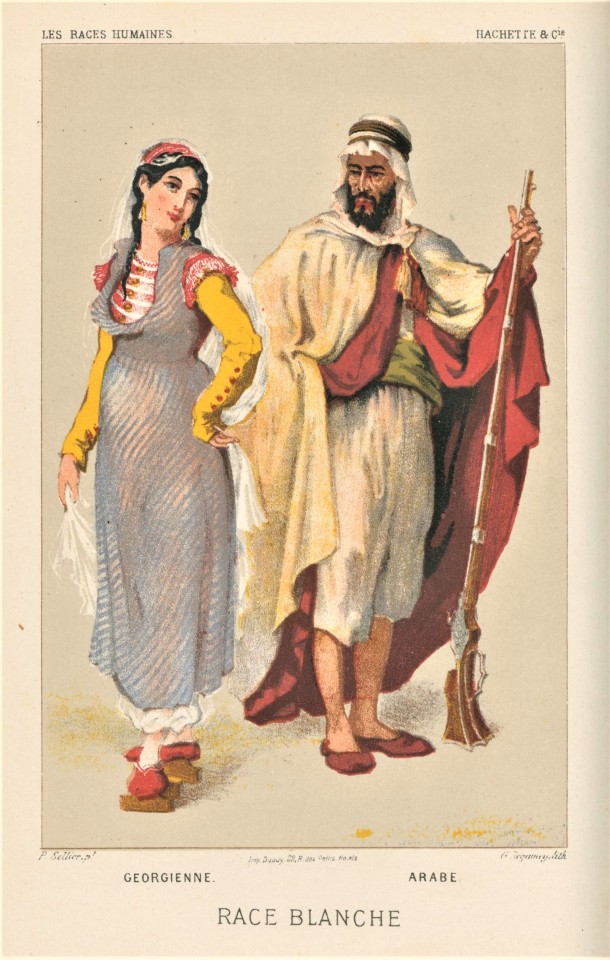

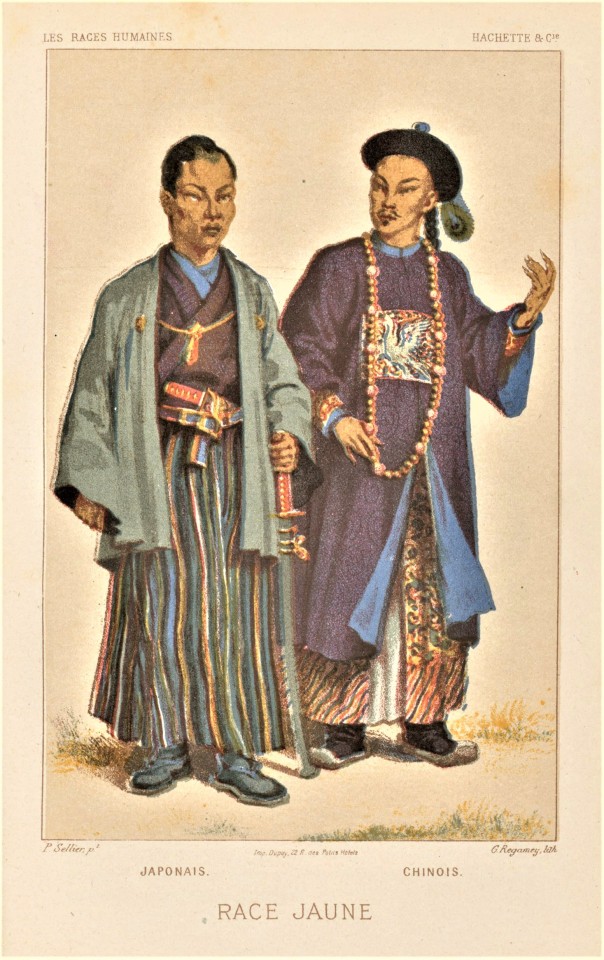

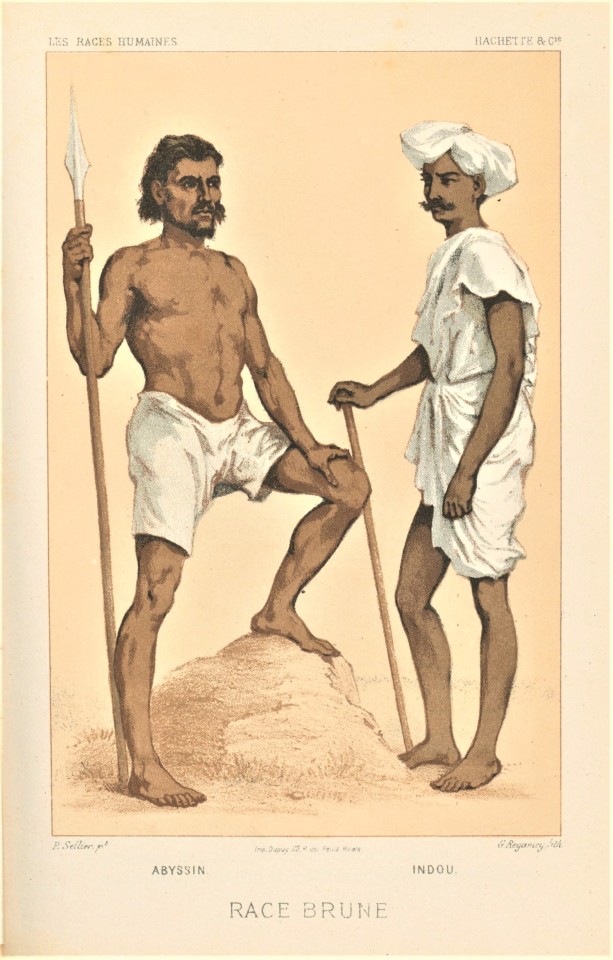


(Antiquated Pop) Science Saturday
This Saturday we are sharing chomolithographs from our second edition copy of Louis Figuier’s Les Races Humaines, published in 1873 in Paris by Hachette. The plates were designed by P. Sellier and printed by G. Regamey.
Louis Figuier, a trained medical doctor with a PhD in pharmacology, left the field to become a full time science writer, publishing on a range of subjects, from natural history to photography. He was hugely popular, both in France and published in translation in the United Kingdom and the United States. His 1863 book on earth history, La Terre Avant le Déluge, was a major inspiration for Jules Verne’s A Journey to the Center of the Earth. Figuier was adamant that popular science texts and science journalism should be left to trained scientists. That is not to say Figuier always got his science right, and Les Races Humaines is no exception. Even by the standards of his contemporaries there are strange classification decisions and descriptions. But to the modern reader, it is unabashedly racist. We collect items like this not to glorify clearly racist viewpoints, but to remember and document the racism that pervades publishing history.
Established by Louis Hachette in 1826, the Hachette publishing firm focused primarily on educational and classical texts and by 1851 had become one of the most successful publishing outfits in France. Hachette sought to expand his influence, establishing an immense network of railroad station book stalls in France, inspired by a similar system he observed in England when he visited for the 1851 Great Exhibition. The railroad bookstores quickly gave Hachette a monopoly in the French book market, and the company branched out into what would today be called “trade” publishing (including works from the emerging field of popular science) to stock his growing distribution network. This monopoly did not go unchallenged and the ensuing battles, both legal and in public pamphlet campaigns, would help redefine the role of the publisher in the book trade (for more on this, see “Louis Hachette and the Defense of the Publisher” from Lost Illusions: The Politics of Publishing in Nineteenth-Century France by Christine Haynes (Harvard University Press: 2015)).
View more Science Saturday posts here.
-Olivia, Special Collections Graduate Intern
#Science Saturday#Les Races Humaines#The Human Race#Louis Figuier#Hachette#Louis Hachette#P. Sellier#G. Regamey#ethnography#popular science#pseudoscience#racism in book history#chromolithographs#Yay chromoliths!#olivia
16 notes
·
View notes
Text

La terre avant le déluge - by Louis Figuier, c. 1864
189 notes
·
View notes
Photo

Louis Figuier, La terre avant le deluge
0 notes